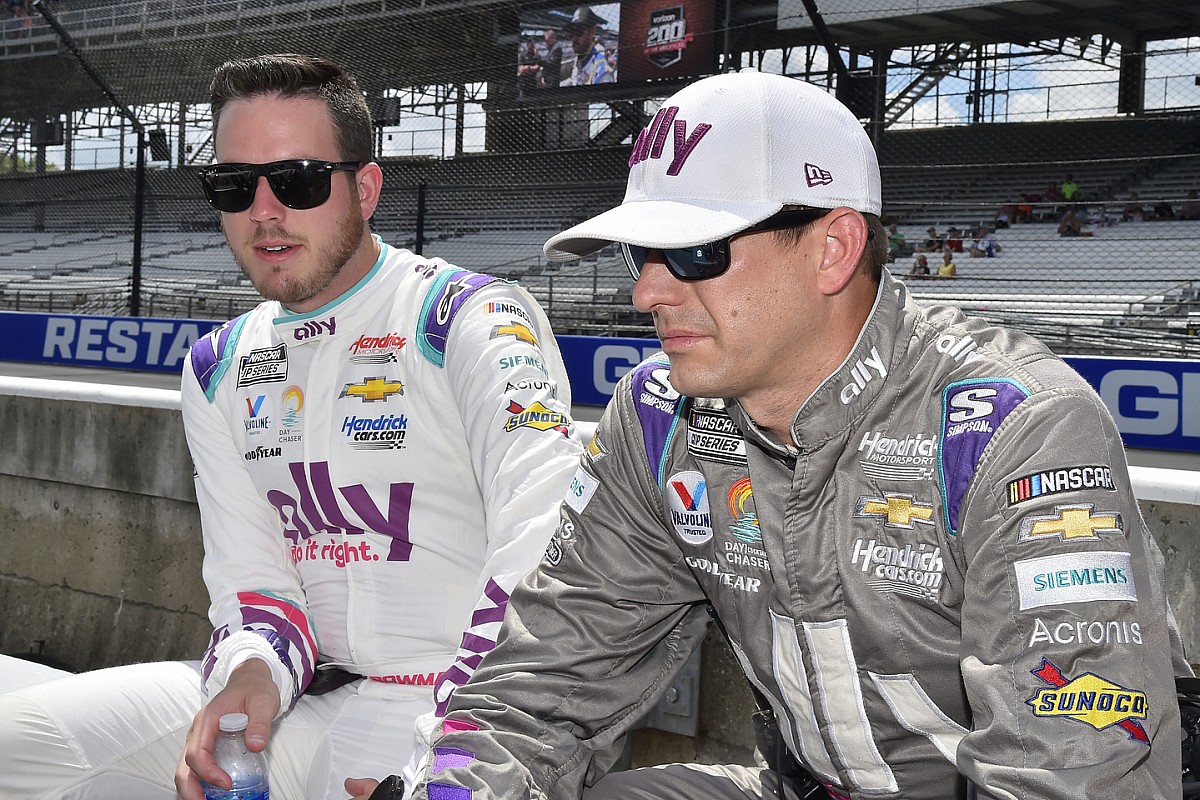
And if there is blame to cast, Ives made clear this week he would shoulder some of the responsibility.
Many drivers were quick to blame NASCAR on the construction of its Next Gen car when Alex Bowman this week became the second Cup Series driver sidelined with concussion-like symptoms this season following a wreck in last weekend’s race at Texas Motor Speedway.
Bowman’s accident, much like the one Kurt Busch had in qualifying in July at Pocono, involved a rear-impact, an area of the new car which has been criticized as being too rigid.
In a rare social media post by Ives, he apologized to his driver and claimed responsibility.
Asked why he appeared to want to take on some of the blame, Ives, Bowman’s crew chief, said: “Ultimately, I think it’s for me, it’s all about togetherness as far I’m in the sport with NASCAR, with Goodyear (and) with the race teams. I’m part of the race teams.
“Ultimately it’s my job to make sure my driver, Alex, is put in the safest situation possible. For me, decisions I made probably throughout the Texas race, ultimately cost us a crash probably and thinking I could have done something different.
“That’s how I look at things. I look in the mirror before I look into the crowd.”
Taking concussions seriously
Ives said it was Bowman, 29, who ultimately went to the doctor on Thursday to be examined for symptoms he had no idea were related to a concussion.
“Alex is very responsible especially with Dale (Earnhardt Jr.) as a mentor. Ultimately, it was his decision to get evaluated – go through those steps and get everything checked out,” Ives said.
“Ultimately, it’s a tough situation. In the end, the right decision was made no matter how the decision was made.”
Ives said Bowman is “determined to be back.”
“He wants to finish the season strong,” Ives said. “We had good momentum in the first round (of the playoffs) but had a little setback (at Texas).
“I feel like he’s going to do everything he can to make sure he’s back and right now that’s 100-percent my goal for him is to be at the Roval (next weekend).”
Feeling responsible as the crew chief
Ives said after incidents like the one with Bowman and those he had as Earnhardt Jr.’s former crew chief, he often looked at what – if anything – he may have contributed to the problem.
He cited details such as tire air pressure, camber, decisions to stay out on older tires rather than pit for newer ones as examples.
Yet Ives is just as dedicated to helping improve the situation for everyone and already met with NASCAR officials this week to go over what could be learned from Bowman’s accident.
“When you try to attack a problem, you want allies to help you with it and I want to be one of those guys,” he said. “We gotta come together. We can’t continue to think that it’s one individual’s fault or one sanctioning body’s fault or one race team’s fault.
“We gotta come together as a group of drivers, as executives, as team owners, as crew chiefs and say, ‘Hey, what can we do to make this better?’
“Understanding the problem is I think clear. Solving the problem is where it starts to get a little cloudy and the common expense of it to what the right move is. That’s where I would like to continue to go.”
NASCAR has a Next Gen car crash test planned next week in Ohio to test changes to improve rear impacts.
There is no timetable for when potential improvements may be implemented – which is the source of frustration for drivers like Denny Hamlin and Kevin Harvick in recent weeks.
Ives said he would like to see changes sooner rather than later but he also understands safety is not an area that can be rushed.
“Even if it’s for one race, it’s better than none and waiting,” he said. “After Talladega, you have (Las) Vegas and that’s a big place you can hit. If we get one race of development in, then that’s a win for everyone.
“You cannot knee-jerk react, especially in these types of situations. I think NASCAR has done a great job of trying to put regulations around the driver’s seat, headrest, headrest foam, those type of things, leg boards to try and provide security and safety to them.
“I think that’s another area that we can look to potentially improve, especially for rear impacts.”







